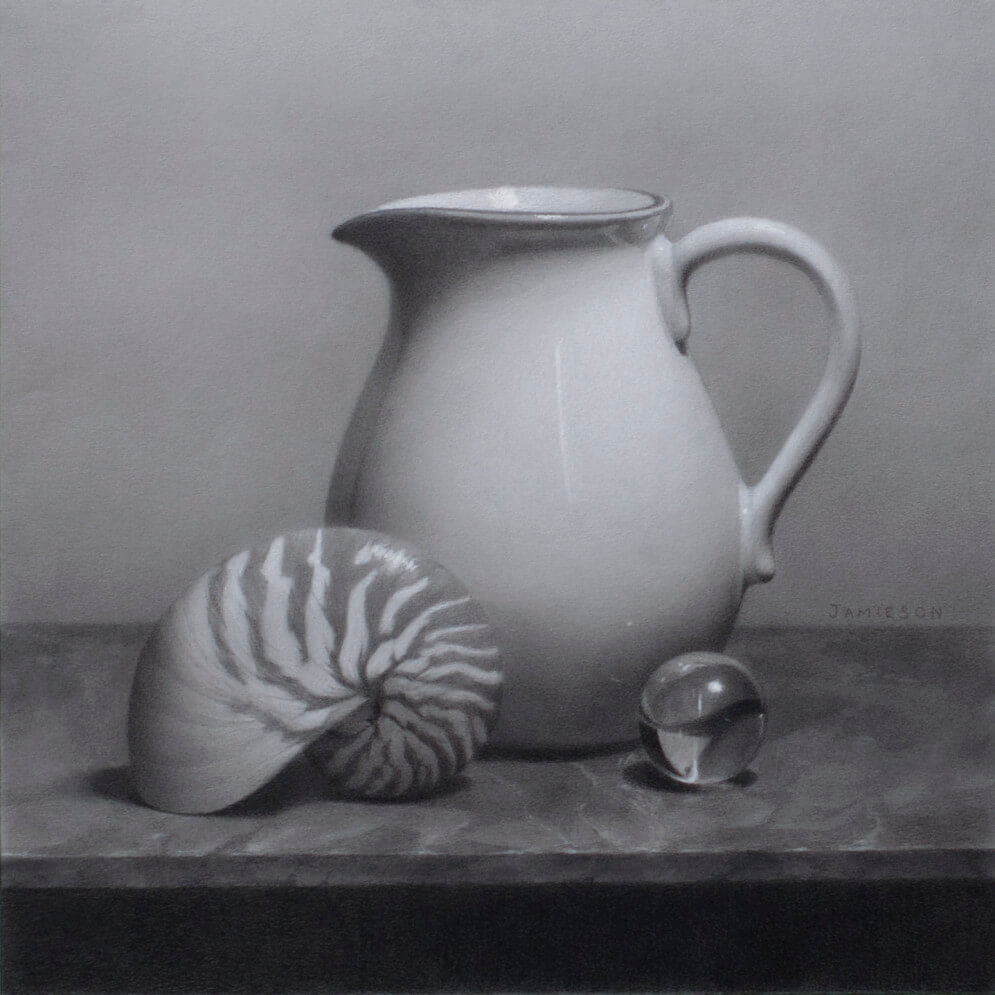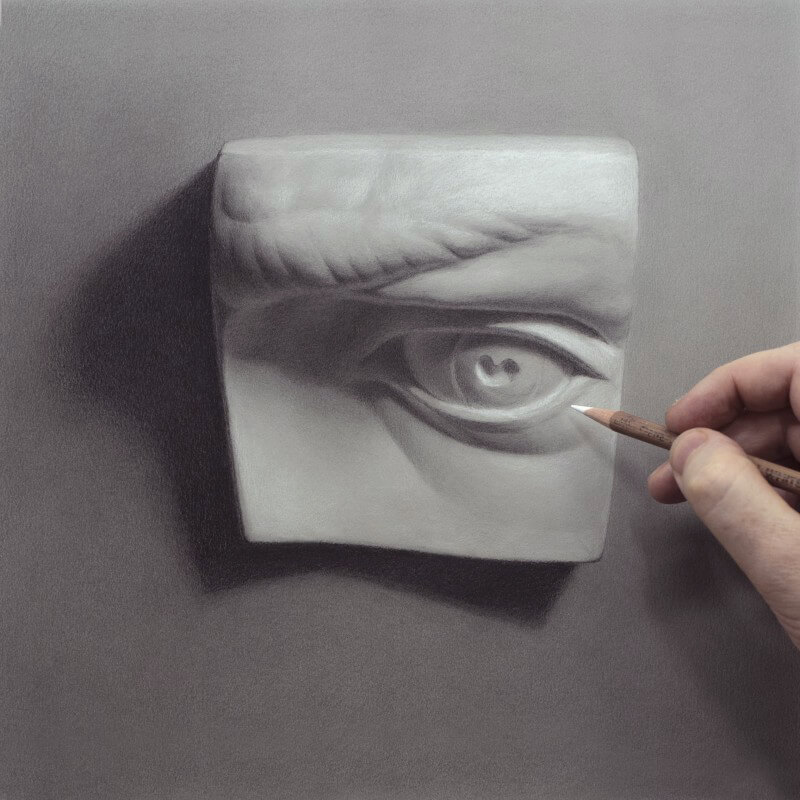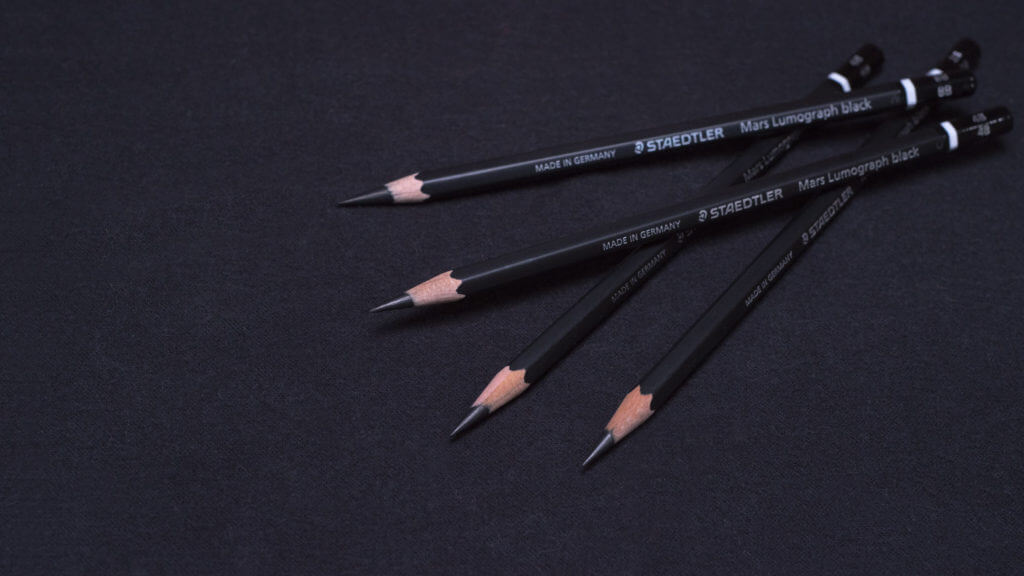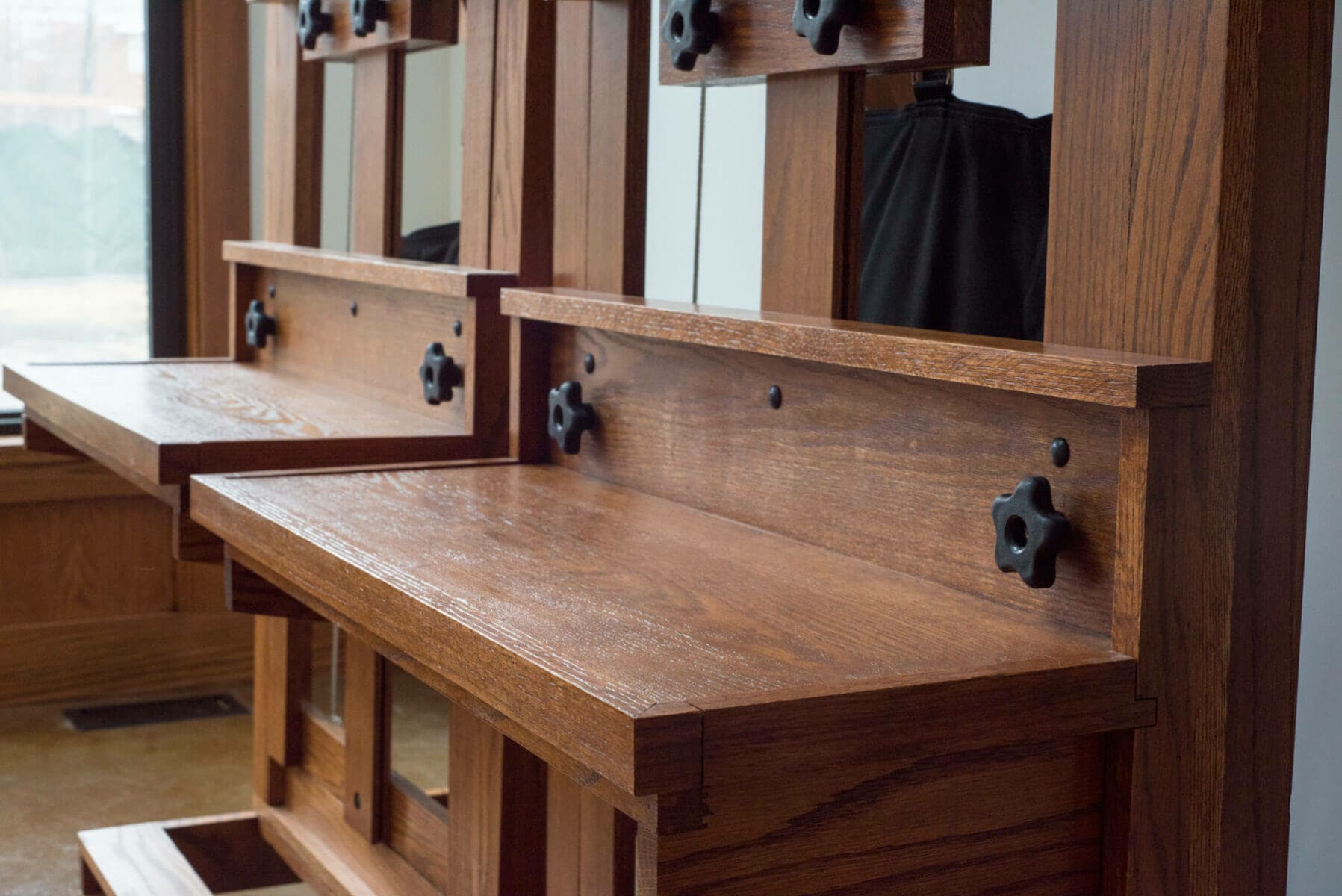Still Life Drawing?

I recently completed a new drawing at the studio titled White Pitcher & Nautilus. My intention is to develop a collection of drawings to use as supporting material for our upcoming online course Drawing Basics. But while working on it I became aware that I don’t think I’ve ever done a still life image that wasn’t a painting. Why is that? Figure drawings and portrait drawings are commonplace, but “still life drawing” just doesn’t sound right. It isn’t really a thing.
But it should be. I found this drawing to be both fun and difficult. It challenged my assumptions about drawing materials, and presented problems I don’t normally encounter while drawing the figure or portraits. The gradient on the white pitcher, for example, was an extremely delicate balancing act. Being a symmetrical, glossy surface with no local variations, I found it far more difficult to organize than the gradients seen organic form, which are somewhat irregular and afford a wider margin of error. On the pitcher, every square centimeter had to be tuned just right or it stood out jarringly as a painfully obvious disruption of the surface. It took a lot of stepping back, squinting and making very minor tweaks and adjustments to get it looking just right.
Similarly, the slate tile offered unique challenges, with its irregular surface requiring unconventional mixtures of chalk and graphite. Normally, I don’t try to mix these materials together as they don’t blend very well. But on the tile itself, there were local scratches, grooves and “dusty” areas that seemed to require a dark foundation of graphite, and then a “float” of chalk on top to get the right effect – not something I normally do.
So this has been an education for me, and I’ll be looking to do more drawing of different objects and surfaces to see what else I can learn about my drawing process – something I thought I already knew thoroughly. But, as I’ve said elsewhere, drawing and painting are complicated and we should always expect to discover new things. That’s what keeps it interesting.


 Portrait Drawing – The Online Course
Portrait Drawing – The Online Course  Anatomy of the Face Kit
Anatomy of the Face Kit  Anatomy of the Face
Anatomy of the Face  Drawing Materials Kit
Drawing Materials Kit  Still Life Painting Kit
Still Life Painting Kit  Cast Drawing – The Online Course
Cast Drawing – The Online Course  Solids Kit
Solids Kit  Still Life Painting – The Online Course
Still Life Painting – The Online Course  Drawing Basics – The Online Course
Drawing Basics – The Online Course 




Fantastico dibujo David, las texturas que has conseguido son increibles. Estoy deseando apuntarme al nuevo curso de “Dibujo basico”, siempre viene bien corregir los vicios adquiridos anteriormente. Seguro que aprendo mucho.
That’s good news, Fernando. “Drawing Basics” is nearing completion. If all goes well, we should have it available by the end of November.
When will it be online? Just curious 😉
Count me in.
Beautiful piece, David. Glad to see you are offering a class on drawing. I personally have experienced the challenge of generating various textures and those subtle variations definitely have that fun/frustration tension that always seems to be an inherent part of the process…always…regardless of the medium. I know people tell me they appreciate the simplicity of a drawing, but this makes me laugh inside because I know there is nothing simplistic about a drawing or the process. You captured the subtleties beautifully.
I know for a time, drawings were only a precursor for a painting. But I have admired artists such as Ingres and James Valerio who have made drawings as final works of art. I still am mesmerized by Valerio’s “Turkish Towel” drawing.
Looking forward to another great course. I always gain great insights from your classes. Thank you for being so generous with your knowledge and experiences.
Also…what paper did you use for this piece?
Thanks, Dawn! The paper used here is Canford cover paper, in a color called “Dreadnought Grey”. We’re looking forward to seeing you back at the studio 🙂
More fantastic work David! Keep it up! Really looking forward to the Drawing Basics course after signing up for the online Portrait class and being so impressed.
Thanks, James. There’s a long way to go yet, but I’m feeling good about the course. Stay tuned.
I’m really looking forward to the Drawing Basics online course! Could you tell me if the course intends to cover how to accurately draw both simple and complex shapes, for example the contours of the objects featured in the beautiful still life above? I ask as I still struggle to break the initial block-in down into smaller lines, and those lines into even smaller lines which form the contour of an object in a drawing.
Also, will the course look at line weight?
Christopher
Christopher, shape construction is one of the focal points of the course. There will be plenty of information and some challenging exercises included to help you with that.